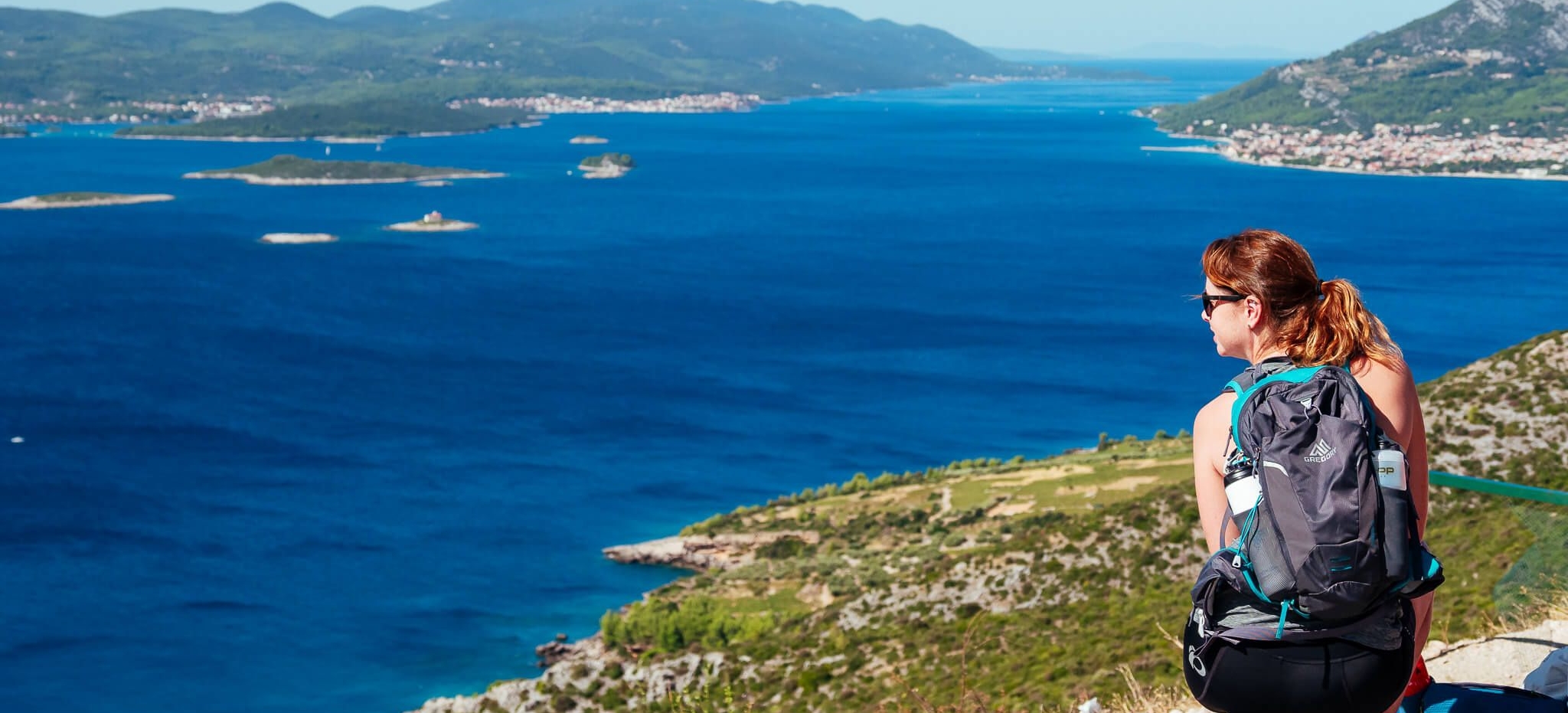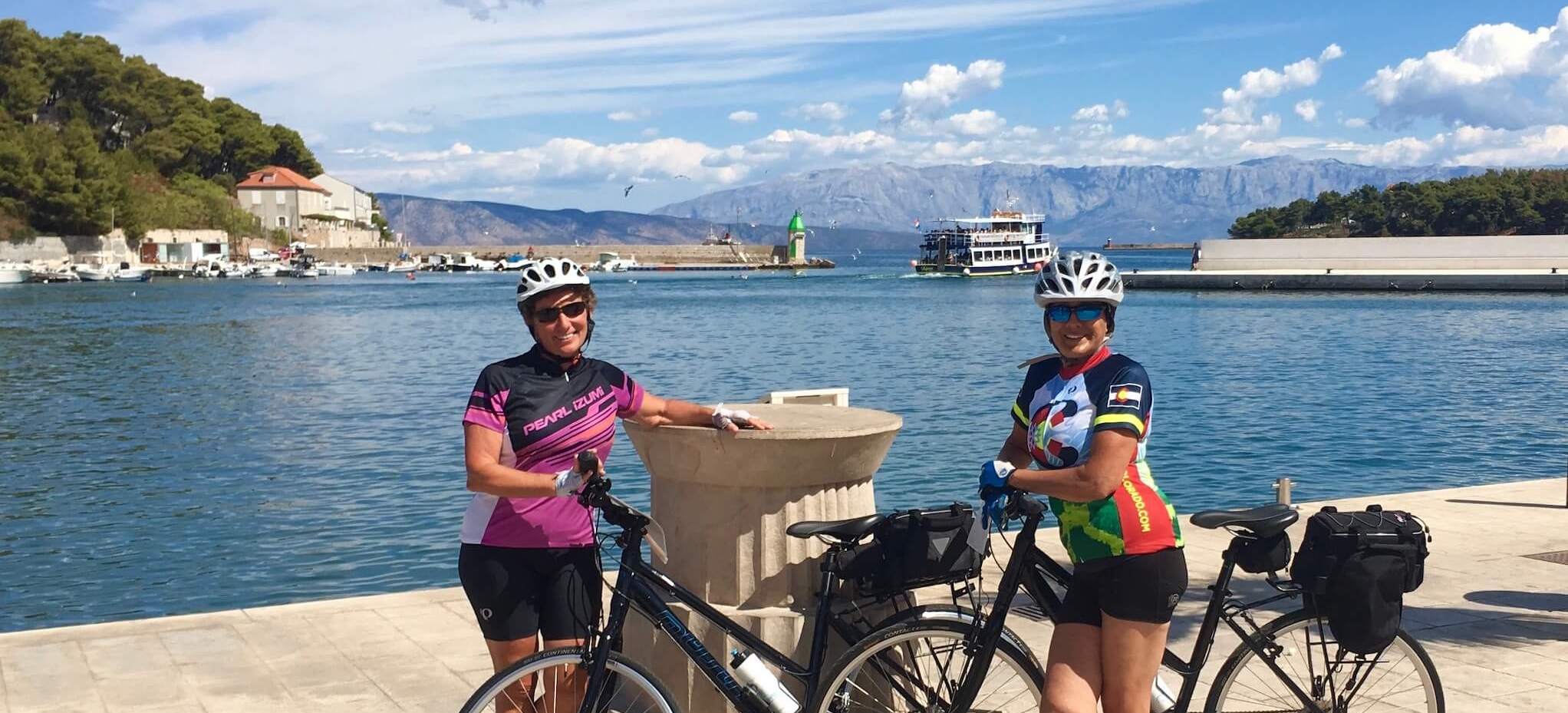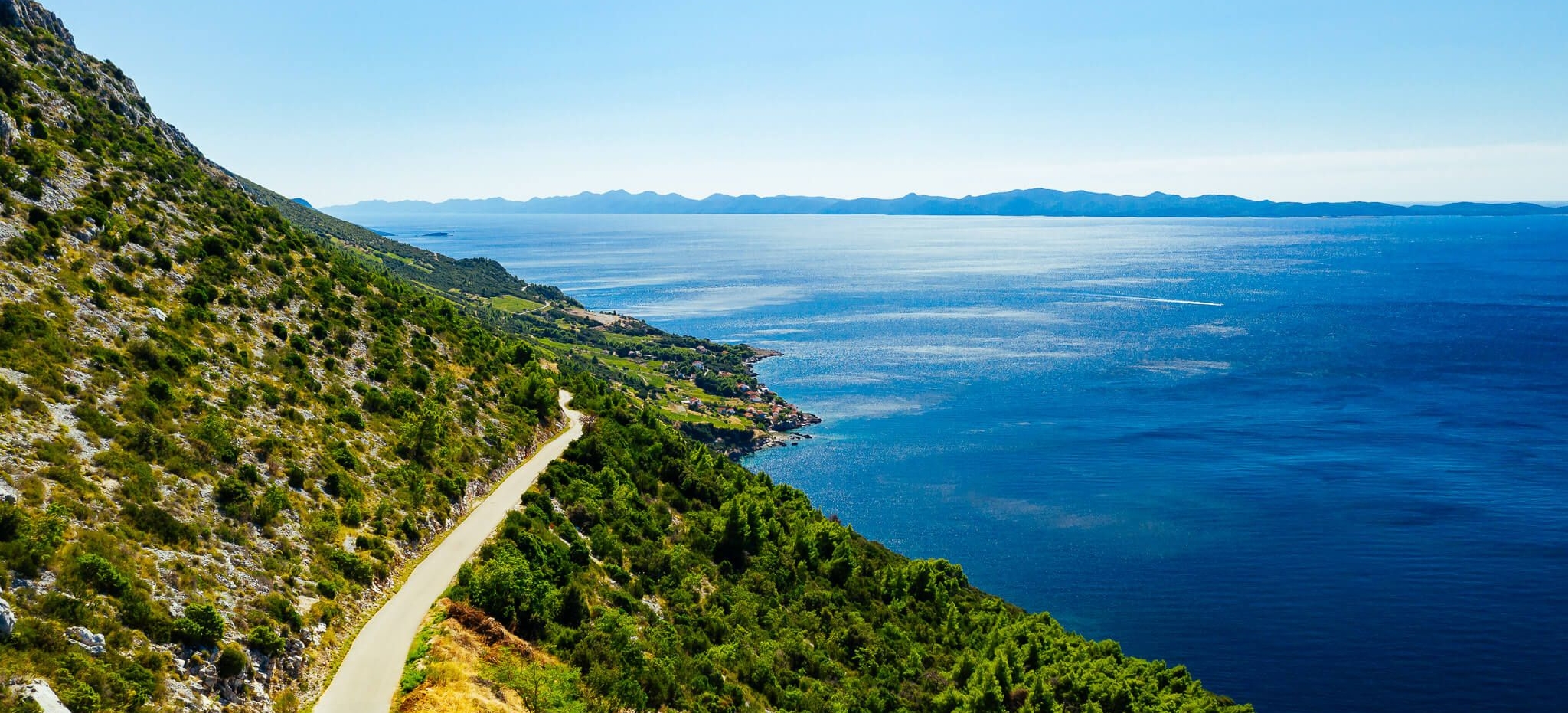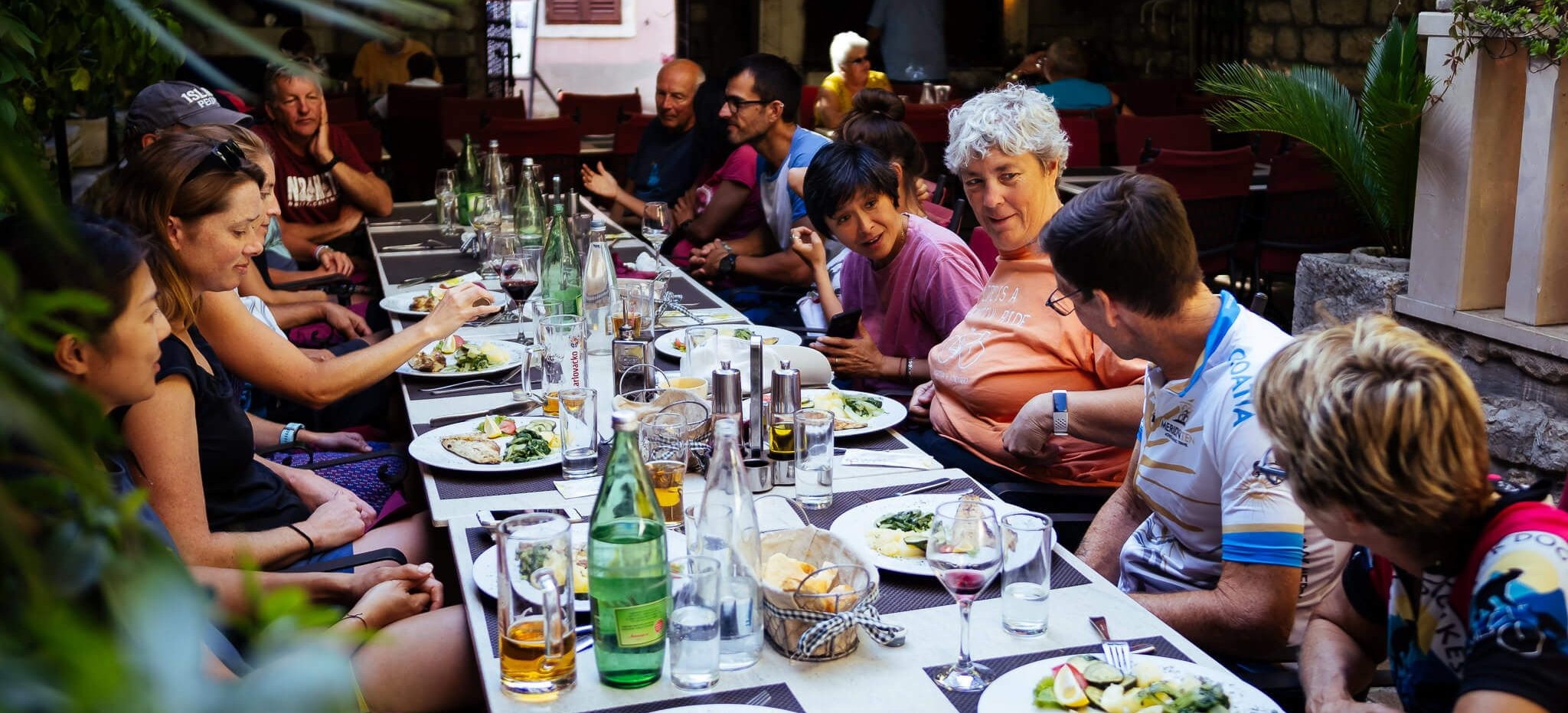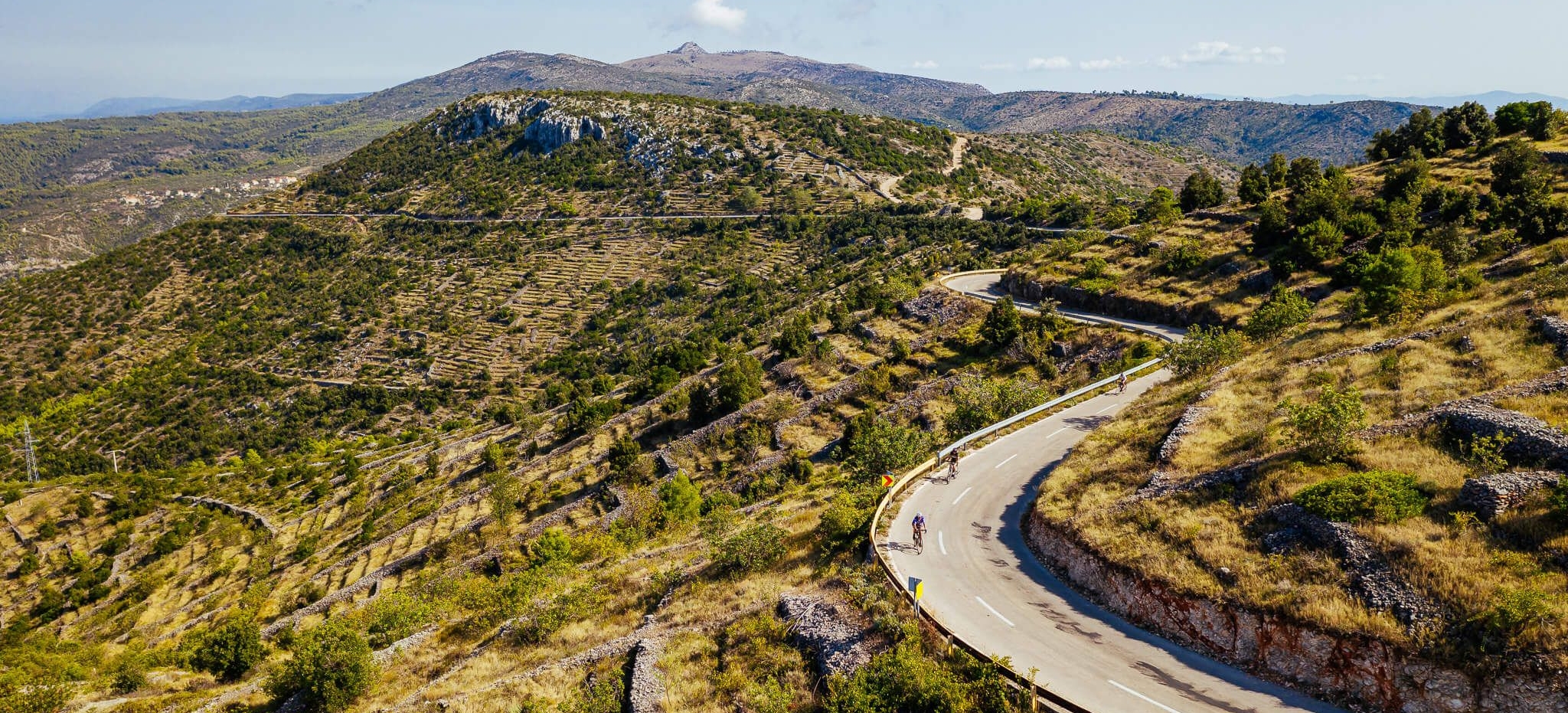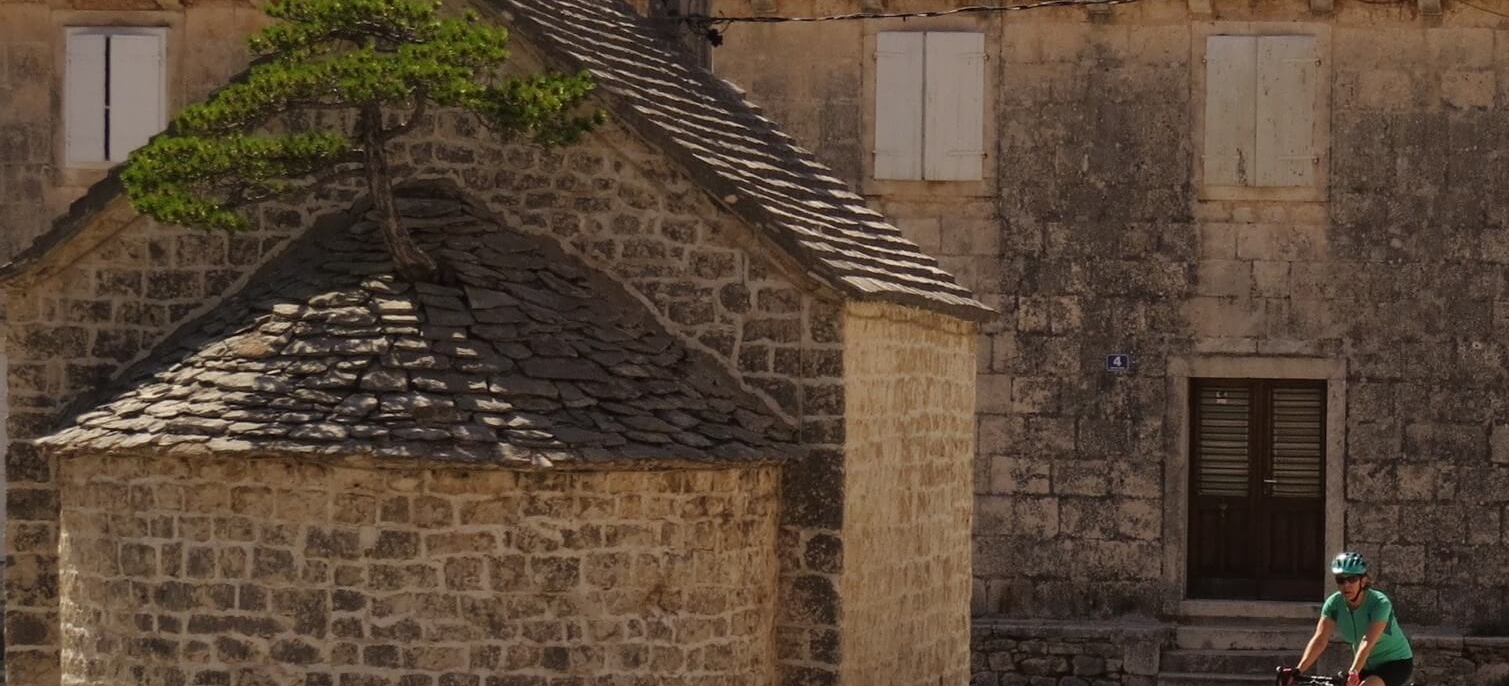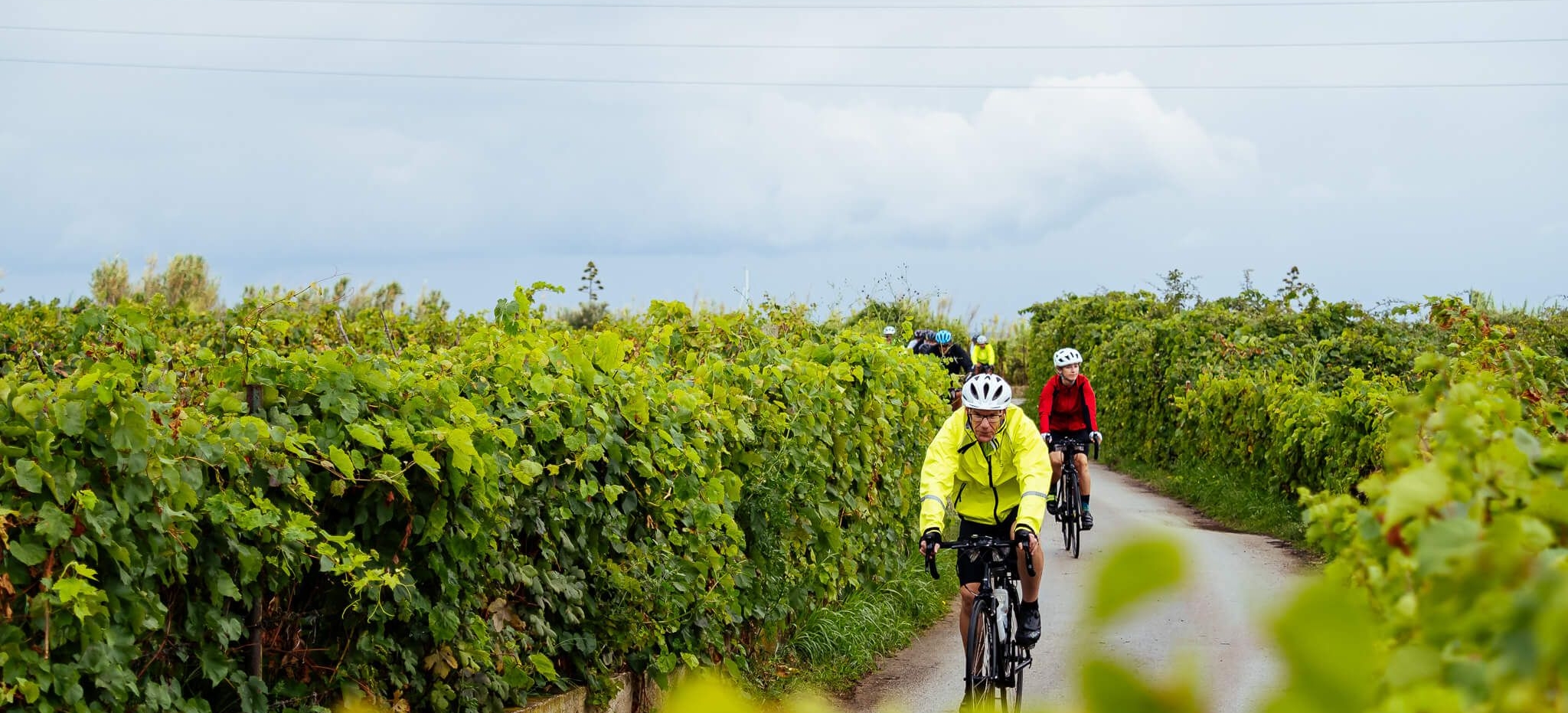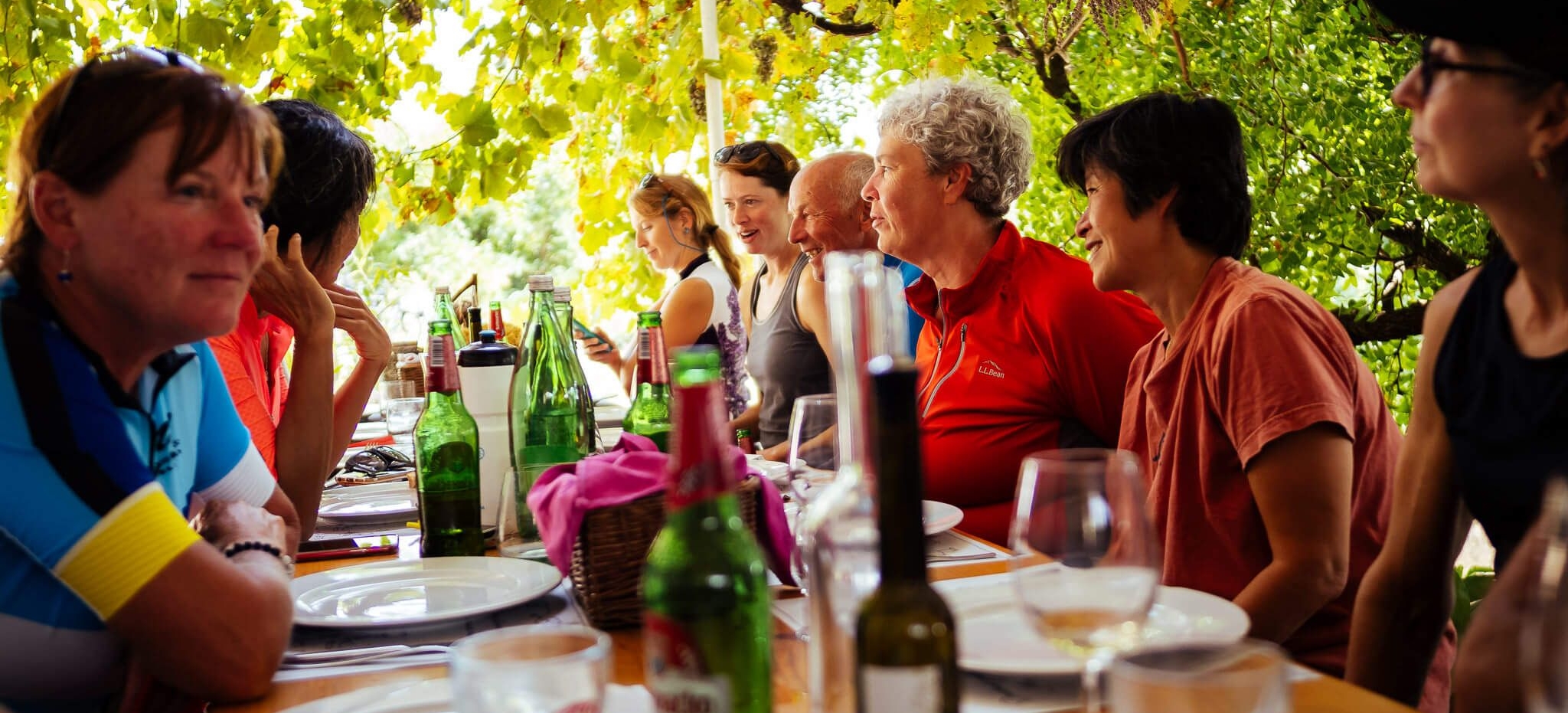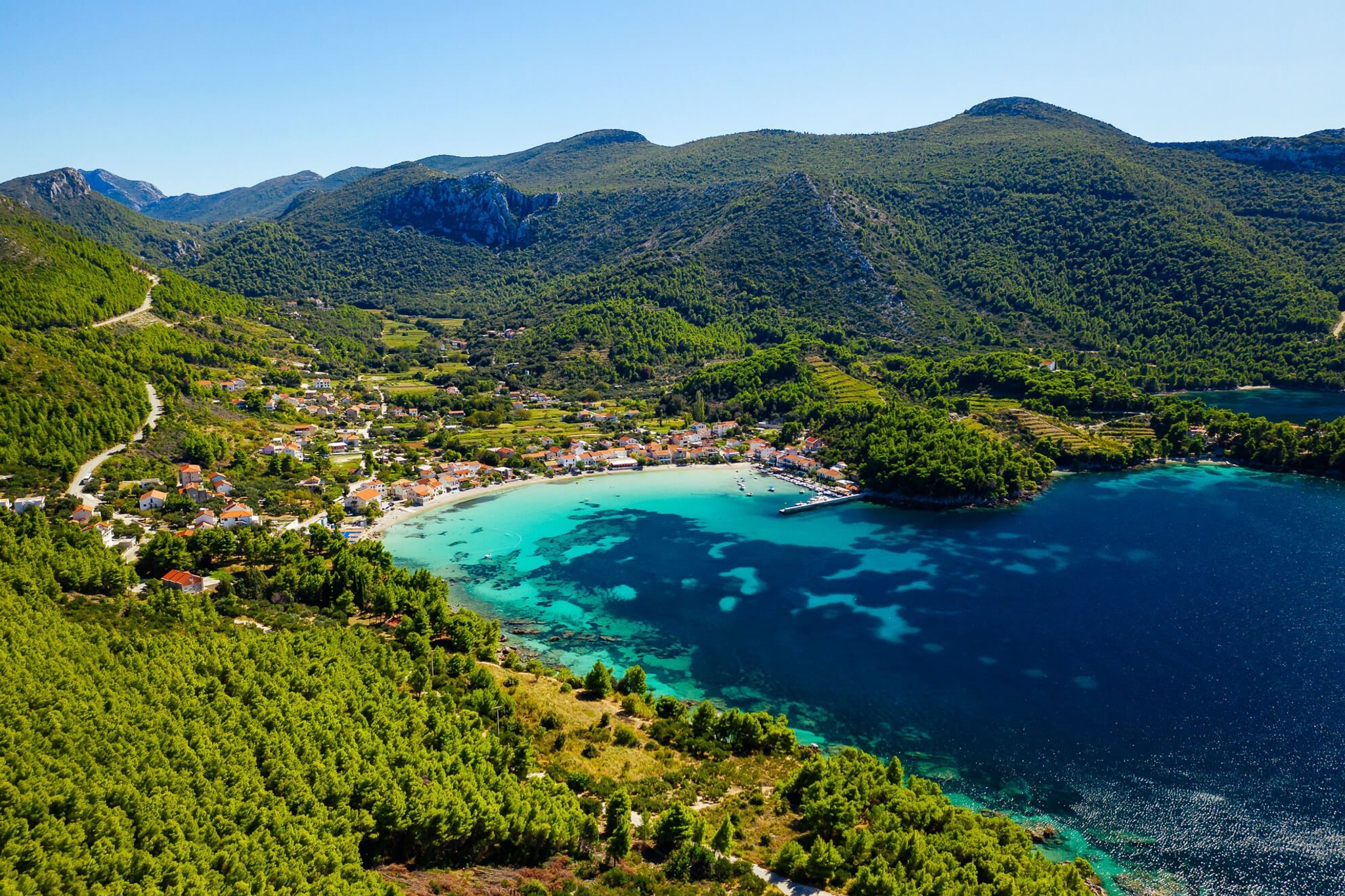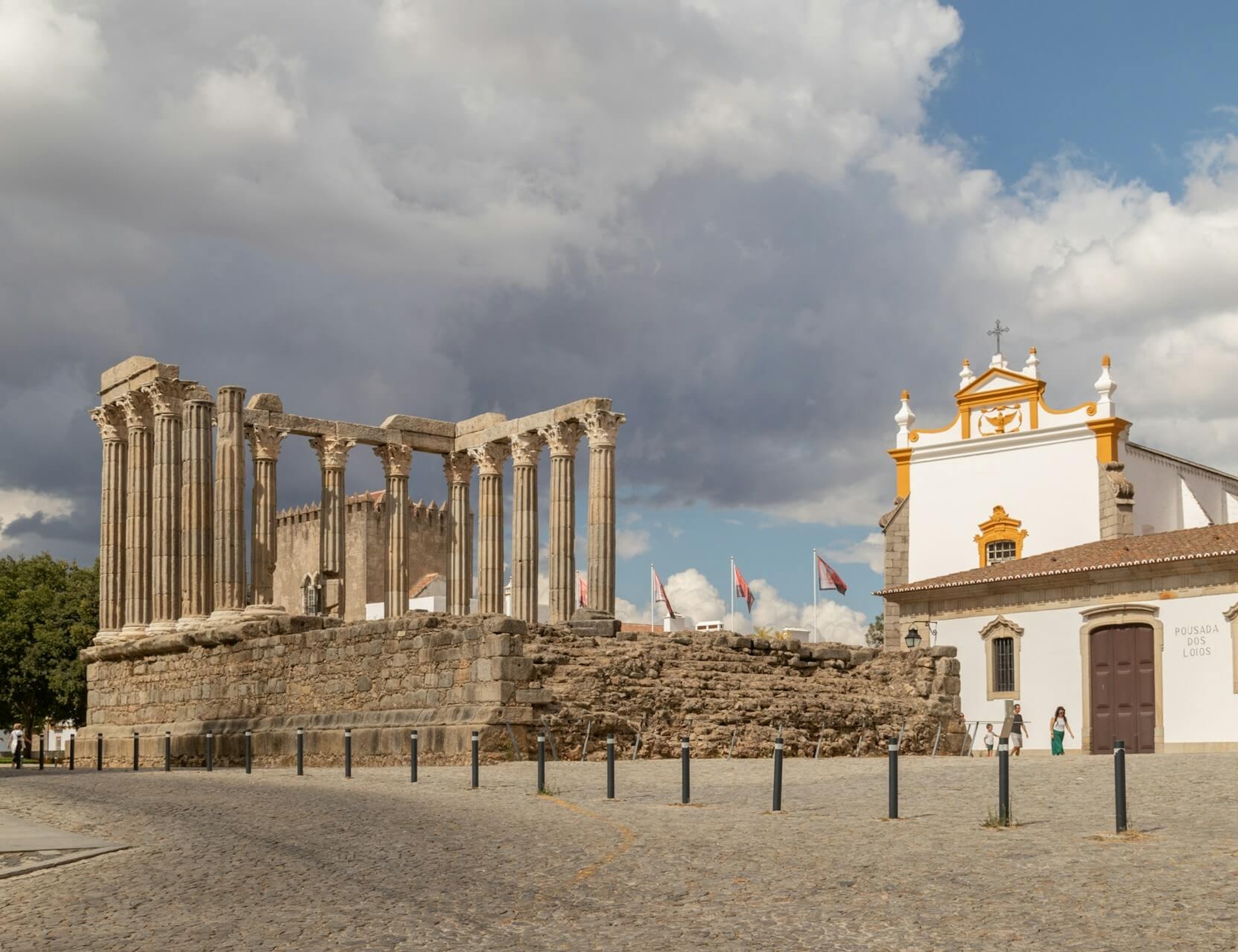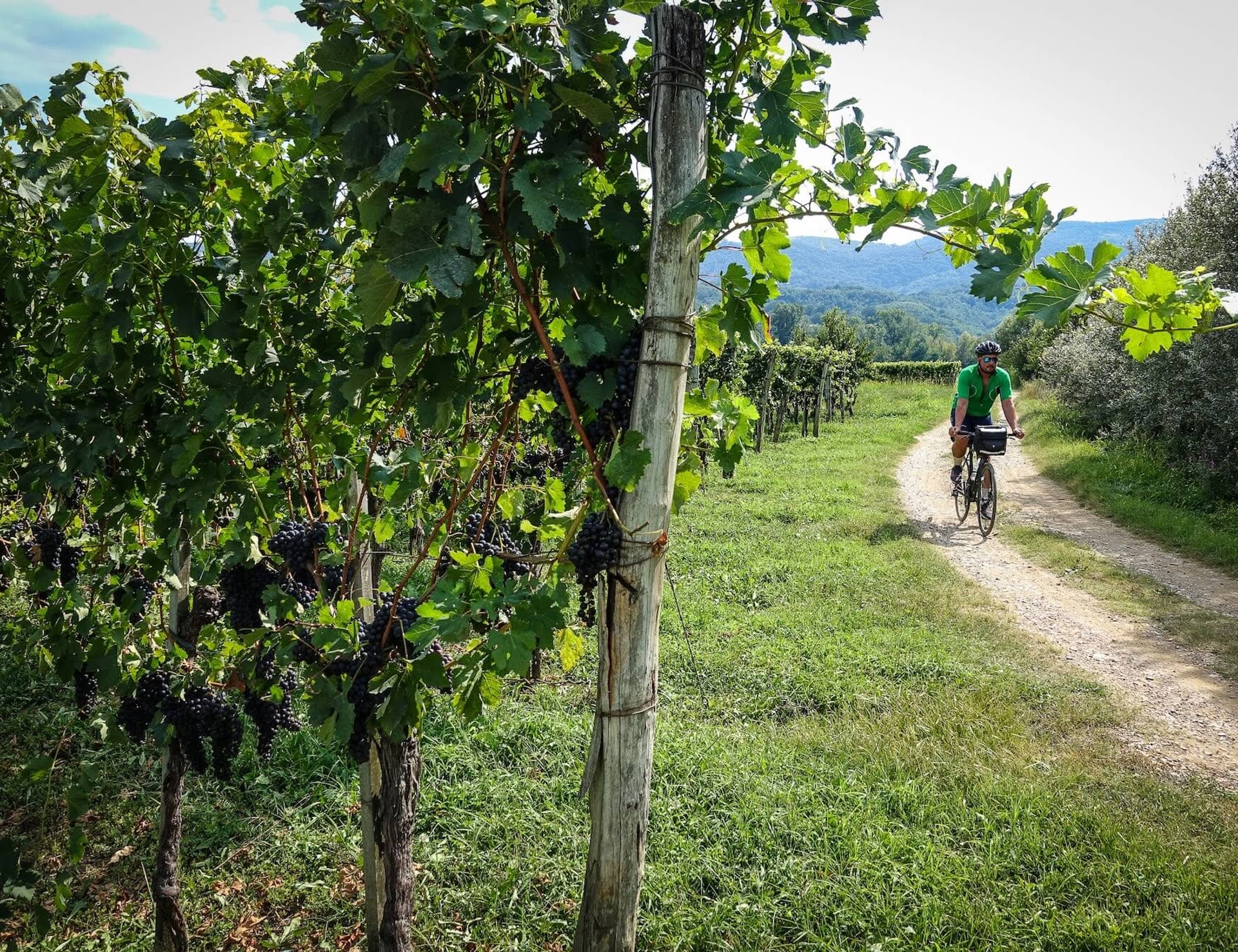8 days
From US $3,995
Island Hopping the Dalmatian Coast Bike Tour
Croatia is a country famous for looking like something out of a fairy tale. With gorgeous white sand beaches looking out over the crystal clear waters of the Adriatic, mountainsides covered with vineyards and olive groves, quaint fishing villages where time does not appear to have moved since the Renaissance, and some of the best food and drink in Europe, Croatia is every traveler’s delight. However, there is more to Croatia than just breathtakingly beautiful landscapes, with which it doubtless abounds. It is also home to some of the best preserved ancient and medieval architecture in Europe, with 4 of its cities recognized as UNESCO World Heritage sites. It is between two such magnificent cities — Split and Dubrovnik — that this Croatian adventure unfolds.
The bike tour will leave an indelible mark on your memory with its enchanting vistas of the Adriatic Sea's pristine waters, charming towns, and sprawling vineyards.
Dubrovnik
Dubrovnik
Casual+ hotels
moderate
50km or 30mi
6
Dubrovnik (DBV)
Dubrovnik (DBV)
Min. 4, Max. 14
Highlights
Itinerary
Brief Itinerary
Meals are indicated as B = Breakfast, L = Lunch, D = Dinner.
Listed hotels are subject to availability and may be replaced with similar alternatives of equal standard.
| Day | Place | casual_plus Inns | Meals | Distance | Activity |
|---|---|---|---|---|---|
| DAY 1 | Dubrovnik to Korčula | Hotel Marko Polo (4-star) | |||
| DAY 2 | Island of Korčula | Hotel Marko Polo (4-star) | B | 45km / 27mi | cycling |
| DAY 3 | Island of Korčula | Hotel Marko Polo (4-star) | B | 56km / 34mi | cycling |
| DAY 4 | Ston | Hotel Ostrea | B | 50km / 30mi | cycling |
| DAY 5 | Ston | Hotel Ostrea | B | 50km / 30mi | cycling |
| DAY 6 | Dubrovnik | Hotel Adria (4-star) | B | 38km / 24mi | cycling |
| DAY 7 | Dubrovnik | Hotel Adria (4-star) | B | 35km / 21mi | cycling |
| DAY 8 | Departure | B |
Detailed Itinerary
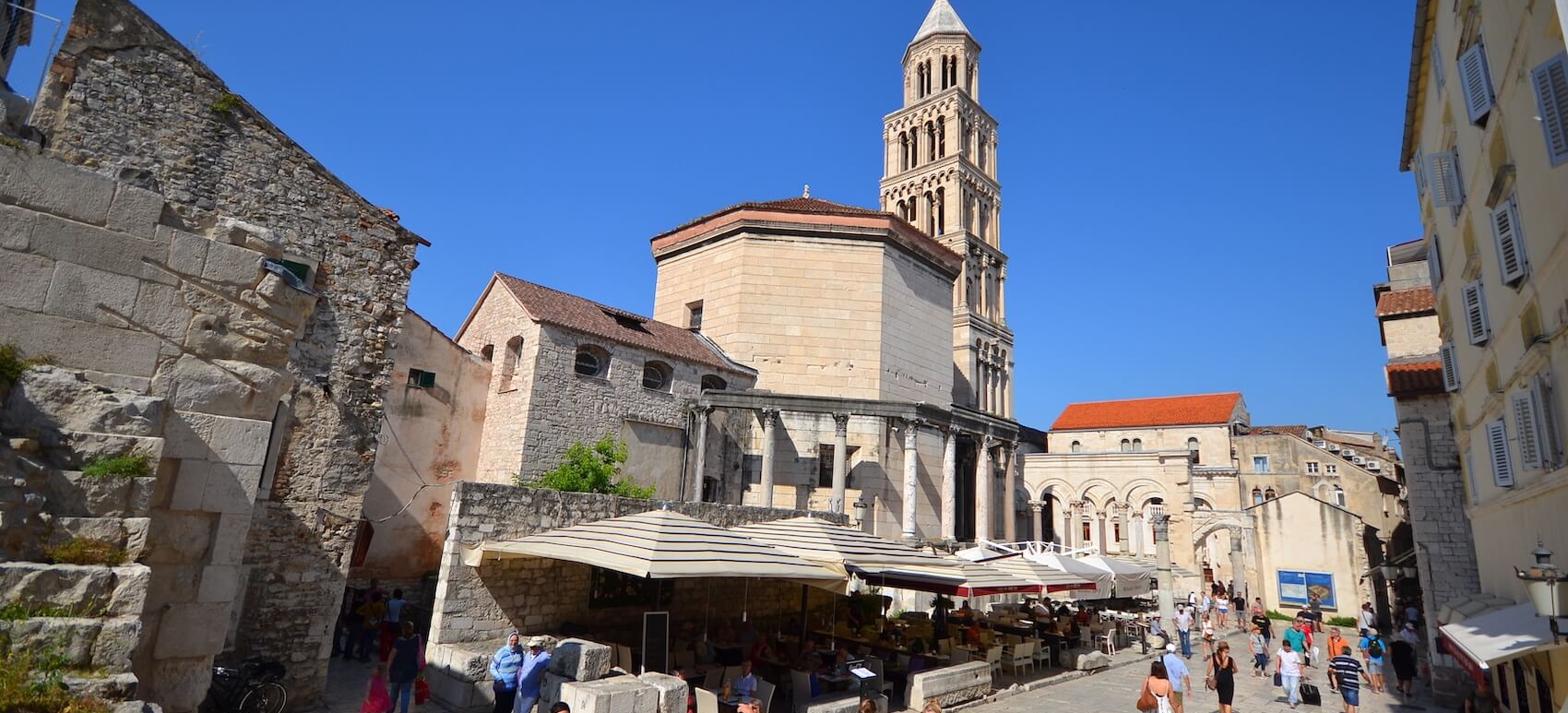
Day 1: Dubrovnik to Korčula
Today marks your arrival, and we’ll greet you at the airport and transfer you to the enchanting island of Korčula, your home for the next two days.
From Korčula, you’ll explore the breathtaking Dalmatian islands and coastline on two wheels.
After check-in, you’ll meet your guide for dinner, a brief orientation, and an overview of the upcoming itinerary.
Note: We include one group airport transfer.

Day 2: Island of Korčula
Korcula island is covered with thick forests of holm oak and pine that the Greeks used for building ships. It has excellent white sand beaches and great views of the clear blue waters of the Adriatic. But above all, Korcula is known for the excellent white wines it produces, three of which, namely, Posip, Rukatac, and Grk are especially noted among wine lovers.
Today's cycling adventure takes you to the east side of Korčula Island, showcasing its natural beauty and charming villages.
You’ll ride along quiet coastal roads and through lush vineyards, enjoying stunning views of the Adriatic Sea. Pass through picturesque villages like Lumbarda, known for its sandy beaches and the famous Grk wine, before heading toward scenic hidden coves and olive groves.
Along the way, you’ll have the chance to visit local wineries, sample traditional flavors, and take in breathtaking panoramic views. The route offers a mix of gentle hills and flat stretches, making it both enjoyable and rewarding.
End the ride with a relaxing stop at a secluded beach or a quaint village café, soaking in the island's serene atmosphere.

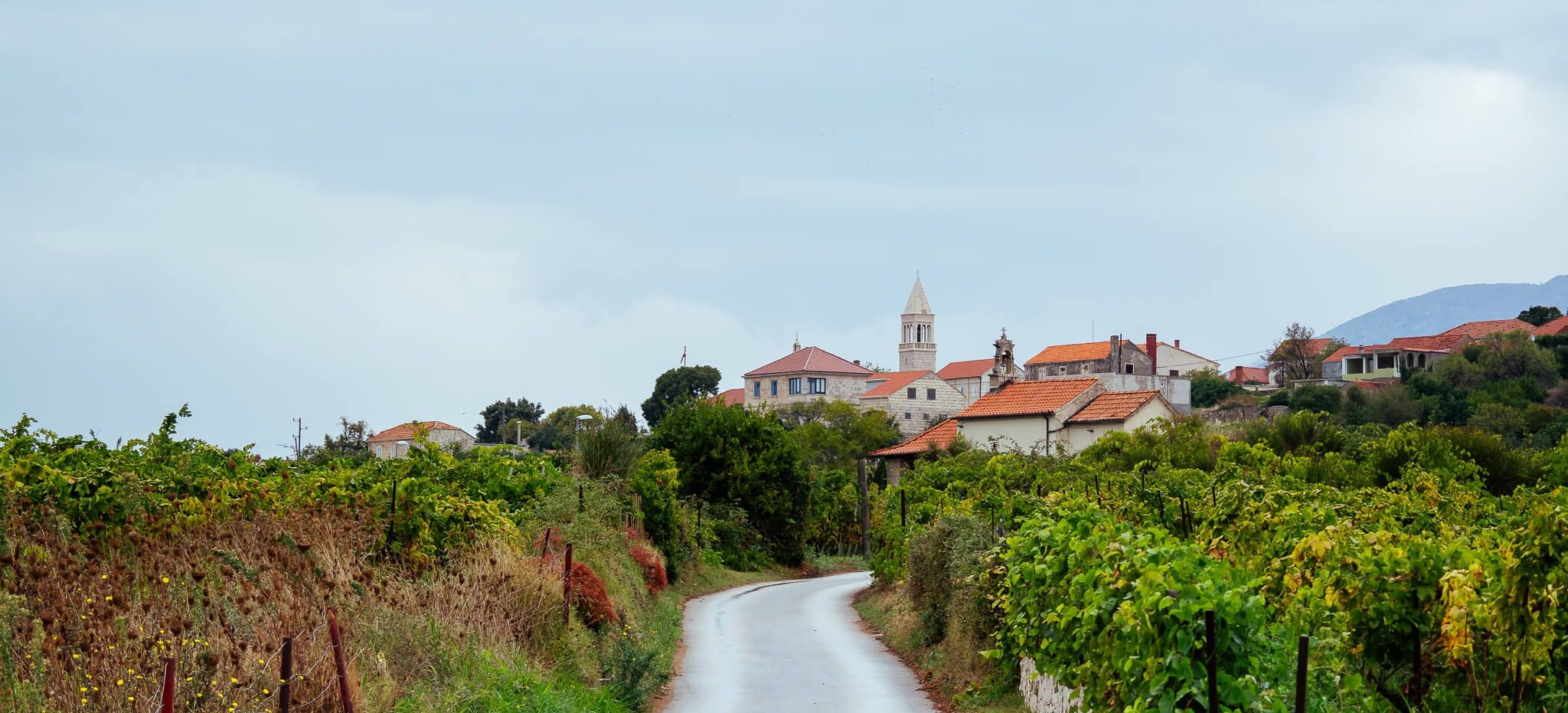
Day 3: Island of Korčula
Today’s cycling adventure takes you across the entire length of Korčula Island, offering a mix of exhilarating climbs, scenic descents, and breathtaking sea views.
This route is perfect if you’re looking for a more challenging and rewarding ride. Along the way, you’ll pass through charming villages and the island’s renowned wine-growing region, including Čara and Smokvica, home to the indigenous Pošip grape. A stop at a local winery is available for those eager to sample the island’s authentic flavors.
The ride concludes with a stunning coastal stretch before arriving in the historic Old Town of Korčula.
After your ride, unwind and enjoy the Dalmatian coastline at one of the nearby beaches.

Day 4: Ston
Next, your cycling journey takes you to the Pelješac Peninsula, renowned for its natural beauty, rich history, and exceptional red wines—or as locals call it, "black wine."
Pelješac is Croatia's second-largest peninsula and home to two iconic brands: Ston and Dingač.
Ston, one of the rare planned towns on the Croatian coast, is famous for:
- The longest fortified walls in Europe (the Ston Walls),
- The oldest active saltworks in the Mediterranean, producing salt since the 14th century,
- A centuries-old tradition of cultivating oysters and mussels.
Pelješac is also synonymous with wine, particularly the celebrated Dingač, named after its steep, sun-drenched vineyards with slopes of up to 70 degrees. Protected by the Geneva Convention since 1964, only wine from these vineyards can bear the name Dingač.
Your route takes you through the peninsula’s scenic roads, including the breathtaking Dingač wine region, where you’ll enjoy stunning sea views and endless vineyards. A stop at a family-owned winery for wine tasting is highly recommended.
You’ll spend the evening in Ston, where you can walk the historic walls, explore the town, and savor its renowned local cuisine. A perfect way to end the day!

Day 5: Ston
Today, you'll cycle on Mljet, one of the most stunning and greenest islands on the Dalmatian coast.
Your ride takes you through the island's National Park, established in 1960 as the Adriatic's first protected maritime area. You'll cycle around the park's serene saltwater lakes, surrounded by lush pine forests and stunning coastal views. The route is gentle and perfect for beginners, with options to extend for those seeking a longer adventure.
Swimming opportunities abound, as the lake waters are typically 2°C warmer than the open Adriatic.
Mljet is steeped in legend—believed to be where Calypso captured Ulysses in Greek mythology. You can also visit Ulysses Cave and discover the island’s Greek heritage. Within the park, you'll take a short boat ride to St. Maria Islet, home to a 12th-century Benedictine monastery. A quick 10-minute walk lets you circle this charming islet.
After your ride, you'll return to Ston in the afternoon.
Note: Early departure to catch the 07:00 car ferry, returning at 15:00 or 16:00, depending on the season.

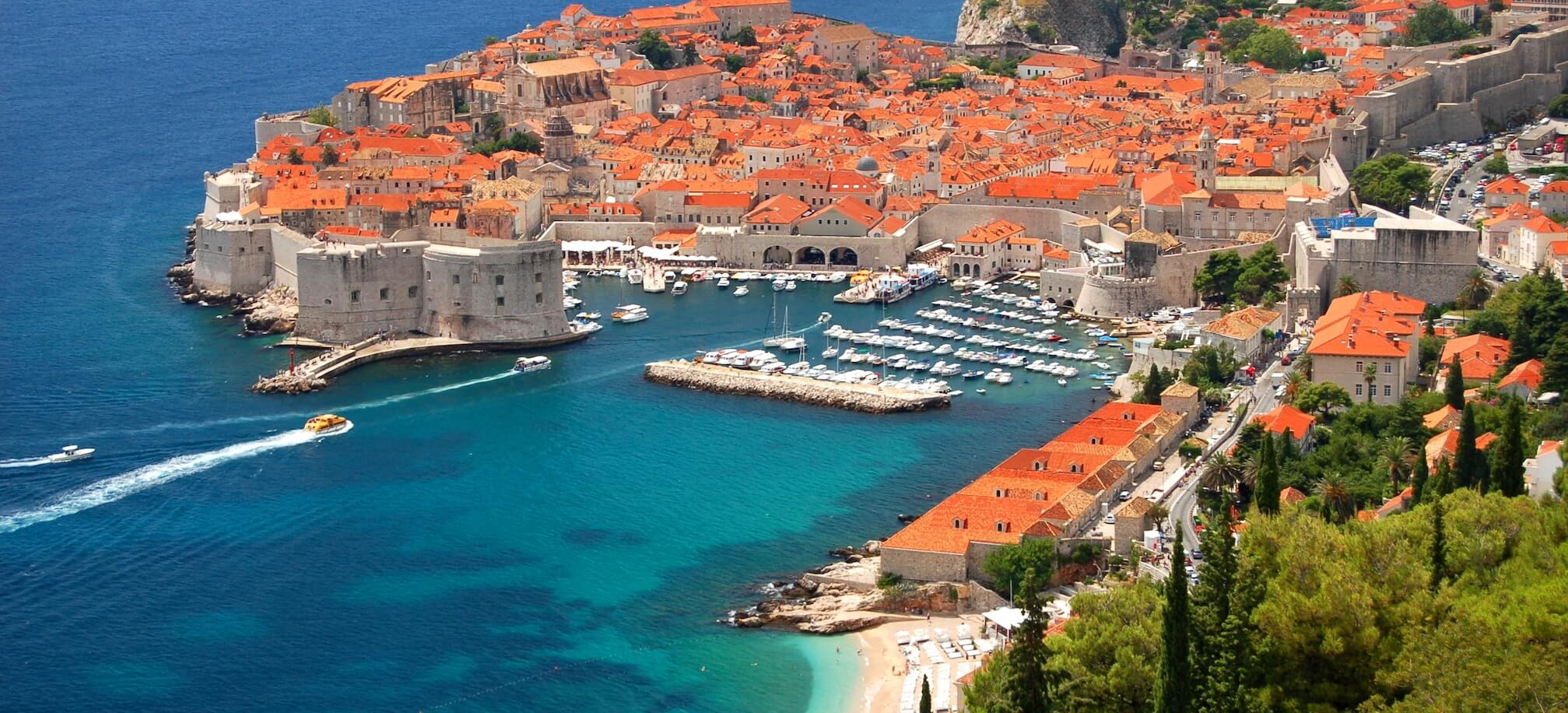
Day 6: Dubrovnik
Today, you’ll venture off the beaten path, cycling through the rugged hinterlands and backroads of southern Dalmatia. Leaving behind Ston and the Pelješac Peninsula, your journey takes you toward Dubrovnik.
You'll cycle through the scenic Dubrovnik hinterland, following quiet backroads and the historic Napoleon Road, with beautiful sea views along the way. Choose between a shorter or longer route, with the option to visit the Trsteno Arboretum, the oldest botanical garden in the Mediterranean. This peaceful spot gained fame as a filming location for Game of Thrones but remains an uncrowded gem.
Afterward, you'll head into the heart of Dubrovnik, famously known as the "Pearl of the Adriatic"—a UNESCO World Heritage site with Europe's largest city walls. As Lord Byron once said, Dubrovnik's beauty is undeniable. We recommend walking along the city walls, which rise up to 75 feet in places, offering spectacular views for photo opportunities. Explore the winding stone streets at your leisure—get lost in the maze of alleys, and take in the city’s rich history.
If you're not too tired, consider joining an evening guided tour to learn more about Dubrovnik’s fascinating past.

Day 7: Dubrovnik
Today, you’ll cycle through the stunning southern region of Konavle, located just south of Dubrovnik, known for its hilly inland, rugged coastline, and picturesque flat valley. This area is famous for its locally produced Dubrovacka Malvasija white wine and its vibrant agrotourism scene, where rural households offer exceptional food experiences.
Your cycling route begins at a high vantage point, offering breathtaking views of the surrounding landscape, before descending into the valley below. Along the way, you’ll pass the Falcon Tower, a recently restored fortification that once served as the residence of local dukes.
As you continue through the valley, you may opt for a visit to a family-owned winery, where you can taste the renowned Dubrovacka Malvasija. This local wine is so exceptional it consistently wins medals at competitions—a true taste of the region.
In the afternoon, you’ll return to Dubrovnik's Old Town, where you can unwind and soak in the atmosphere on your last day of cycling in Croatia. Enjoy a leisurely stroll through the historic streets and reflect on your unforgettable journey.

Day 8: Departure
Please travel further as per your onward travel plans.
Ready to plan your adventure? Download a print-ready detailed itinerary.
Map
Dates and Prices
Single Supplement
From US $1,200
E-Bike Upgrade
From US $250
Couldn't find a trip with convenient dates?
Open your date as a join-in tour or customize further as a private one.
Essential Info
Inclusions
LODGING
All hotels as mentioned in the tour details or similar (subject to availability).
trip leader
Expert Trip Leader(s) who look after your every need and add meaning to your vacation.
bike
Immaculately maintained bike with helmet, suited to a terrain.
shuttle
A Van support follows the group of riders and carries all belongings.
meals
Meals as per itinerary. Guests are given the opportunity to dine on their own so that they discover a location independently.
refreshments
Refreshments and mineral water while cycling.
entrance
Entrance fees to most of the monuments and temples.
Exclusions
Airport pickup and drop
We recommend to book direclty from airport or hotel.
Beverages
Beverages such as alcohol, tea, coffee, juice at a hotel or restaurant.
Gratuity
Gratuities for your guide team are not included in the trip price.
Bikes
When you have a road and the thrill of a journey ahead of you, it’s imperative to have a good bike to enjoy it. Our fleet majorly consist of the below bikes as a part of this tour. However, sometimes due to height or availability constraints, we may provide a different but similar quality bike.
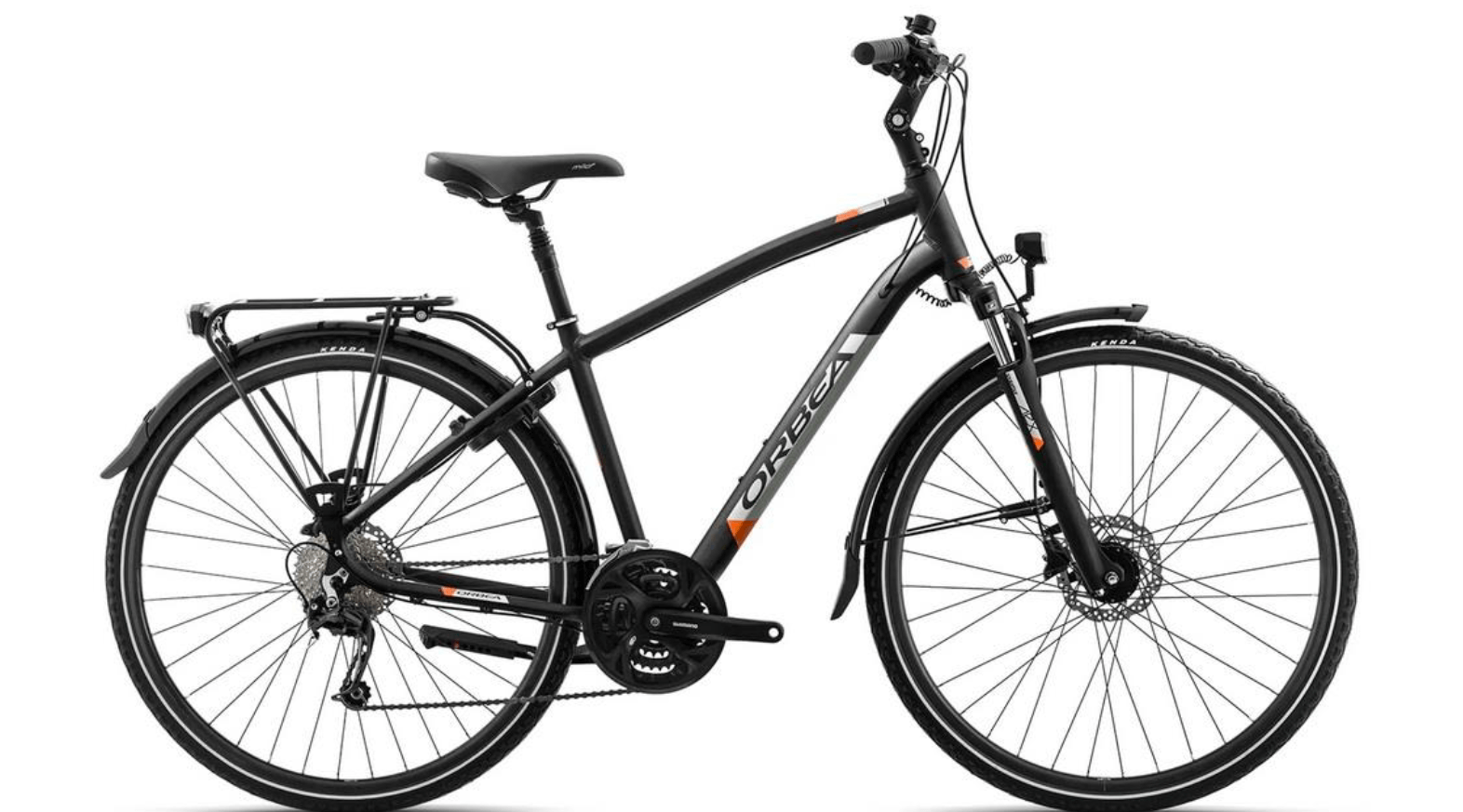
Orbea Comfort 10 Pack or similar
Included in your trip price
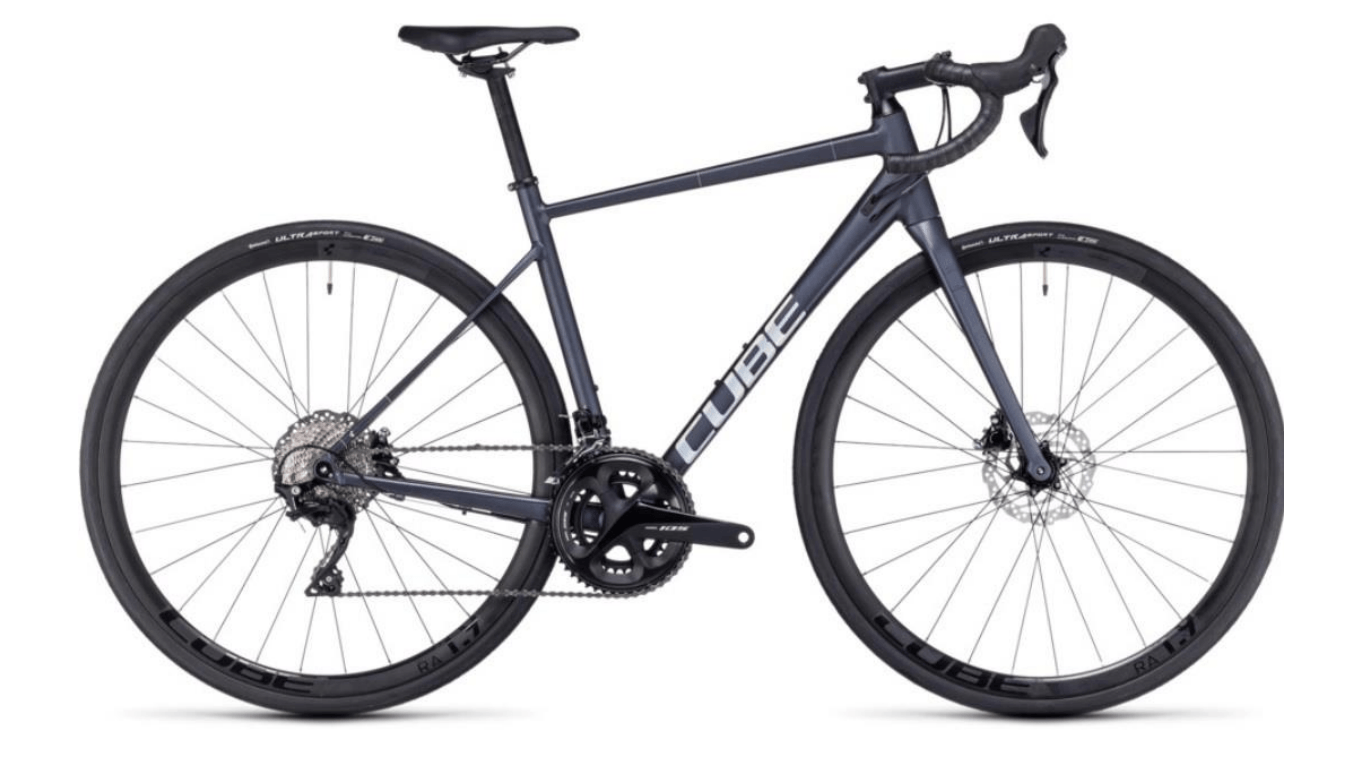
Cube or similar
Included in your trip price
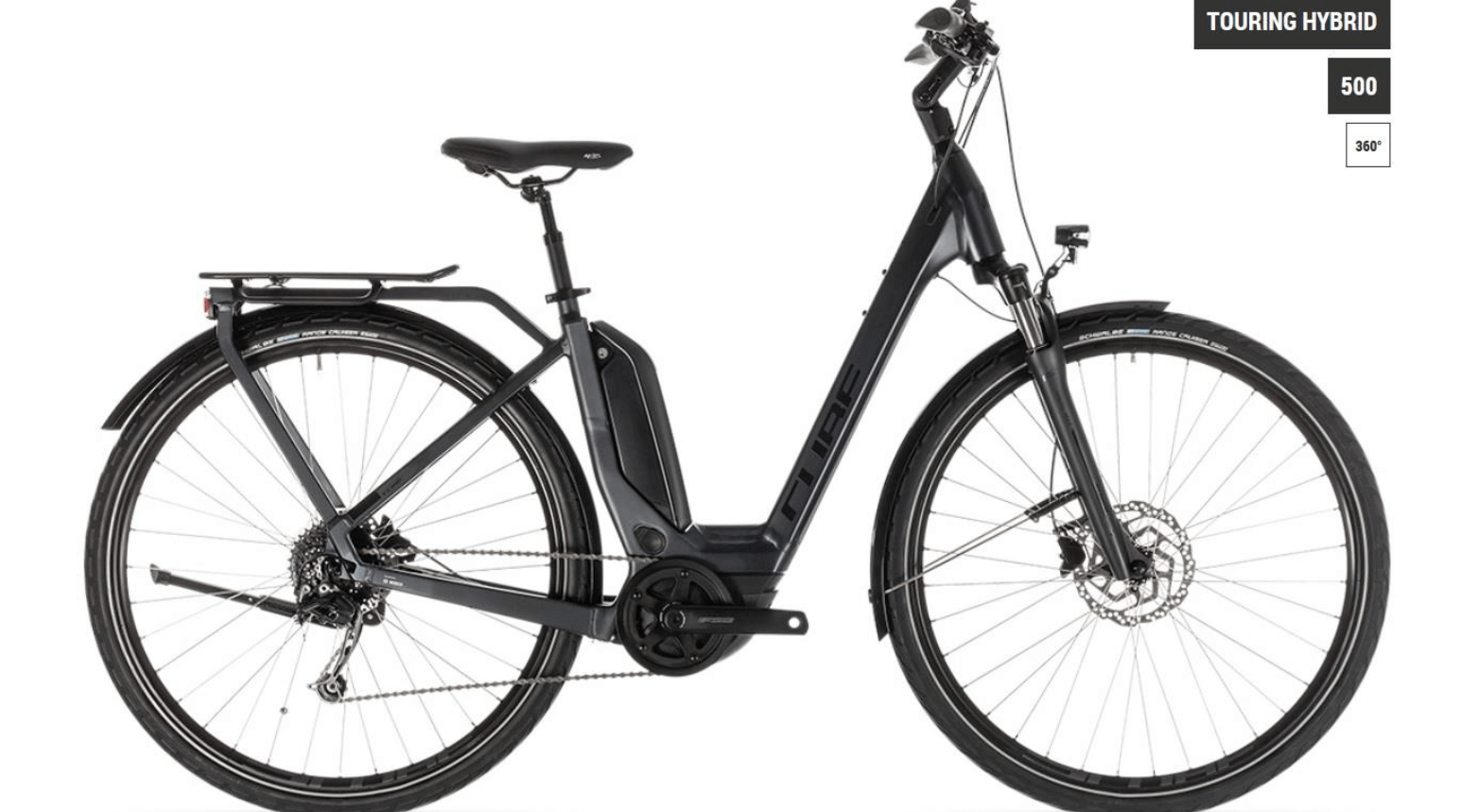
Cube Touring E-Hybrid 500 or similar
Available at a surcharge
Weather
Late spring (from the end of April to the end of June) and early autumn (from the end of August to the end of October) offer optimal conditions for biking in Croatia. During these periods, temperatures are not excessively hot, traffic is moderate, and finding accommodation is relatively easy due to it being outside the peak tourist season. Occasional rain showers may occur, but they are typically brief. In summer, temperatures range from 22°C to 26°C in the continental region, 15°C to 20°C in mountainous areas, and 26°C to 30°C along the coast. The busiest tourist season spans from mid-July to mid-August, making accommodation more challenging to secure without prior booking.
January
Offseason
February
Offseason
March
Mixed
April
Mixed
May
Good
June
Best
July
Mixed
August
Mixed
September
Best
October
Good
November
Mixed
December
Offseason
Best
Good
Mixed
Offseason
What to Pack
Packing smart is essential for a safe and enjoyable cycling adventure. From essential biking gear to clothing and travel necessities, this guide ensures you're prepared for any terrain or climate.
Recommended Bicycling Clothes & Gear
- Bicycling shoes or stiff-soled sneakers.
- Padded cycling shorts.
- Short-fingered cycling gloves (personal gloves are ideal).
- Brightly colored cycling jerseys or synthetic T-shirts for visibility.
- Synthetic cycling socks.
- Sunglasses with UV protection.
- Personal helmet (recommended even though provided).
- Personal saddle (optional for added comfort).
- Rain jacket or windbreaker.
- Cycling water bottle (to reduce plastic waste).
Note: Helmets, gloves, and water bottles are personal items, so bringing your own is recommended for maximum comfort and hygiene.
Clothing
- Light, breathable fabrics like cotton or linen.
- Full-sleeved clothing for sun protection.
- Warm layers for chilly mornings and evenings (if traveling in winter).
- Comfortable footwear for non-cycling time.
- Bring a compact rain jacket in case of sudden weather changes.
- Ethnic or modest clothing for exploring towns and temples.
Other Necessities
- Toiletries: Basic hygiene essentials, including insect/mosquito repellent and sunscreen.
- Hand sanitizer and wet wipes.
- Plug socket adaptor.
- Binoculars for wildlife spotting or desert landscapes.
Pro Tips
- Pack light but plan for the varying temperatures: warm days, chilly evenings, and desert winds.
- Use brightly colored clothing for visibility on roads.
- Pack light to leave room for shopping.
Luggage
Please limit your luggage to one medium-sized suitcase and one carry-on bag. Mark your luggage with your name, address, and phone number.
Visa Information
Before venturing on your adventure, make sure you're equipped with essential travel advice, including security updates, local laws, and crucial passport and visa information. Start by visiting the official government website of your home country for accurate and reliable guidance:
- UK Residents: Stay informed by reviewing the Foreign, Commonwealth & Development Office (FCDO) Travel Advice.
- US Residents: Access vital travel tips and updates through the US Department of State Travel Advice.
- Australian Residents: Plan ahead with the latest updates on the Smart Traveller website.
- Canadian Residents: Find comprehensive travel and visa guidance on the Government of Canada's Travel Advice and Advisories.
- New Zealand Residents: Get practical travel advice on the New Zealand SafeTravel website
- Residents of Other Countries: Check with your government or local consulate for tailored travel advice and requirements.
Note: Passport and visa regulations can change at any time. Stay proactive by checking for the latest updates to ensure a smooth and stress-free journey.
Insurance
Medical insurance that covers medical costs in case of an accident during the trip is mandatory to participate in our tours.
We recommend to purchase adequate travel insurance in order to participate in our tours and protect yourself from unforeseen events. Our experience shows that guests who purchase travel insurance—including coverage for all activities on the itinerary, trip cancellation, interruption, delay, baggage damage, loss or theft, personal accident, death and repatriation costs, medical and emergency expenses (including Covid-19), and personal liability—travel with greater peace of mind.
Can I use my credit card insurance?
Yes, as long as it meets our requirements and provides adequate coverage. Ensure you have an emergency contact number and policy number available.
When should I buy travel insurance?
Purchase travel insurance as soon as you've paid in full or booked your flights.
Is proof of travel insurance required?
Yes. You must provide your insurer's name, policy number, and emergency contact via our reservation form. This is mandatory. If you cannot provide proof, you’ll need to purchase insurance before traveling with us.
Does Art of Bicycle Trips sell travel insurance?
We do not sell travel insurance directly, as we believe our customers should have the freedom to choose a policy that best suits their needs. However, we recommend Insured Nomads as a great starting point.
Frequently Asked Questions
This tour is on largely paved roads.
The fitness level required for each trip is indicated by the "level" of the tour, which in turn is mentioned on each tour page right next to the price and the trip duration.
Easy: The terrain is mostly flat with a few gentle climbs.
Moderate: The terrain is either mostly flat or consists of rolling hills with a few challenging climbs. There could also be a few days with longer riding distances of up to 75 kms (45 miles)
Difficult: The terrain is mostly hilly with strong elevation gains and/or has long days on the bike. Such trips are recommended for intermediate to advanced cyclists.
Please note that we usually bike around 4-5 hours per day irrespective of the level of the trip.
We've designed this itinerary such that most of the cycling happens on quieter countryside roads far from busy traffic.
While your tour price covers most common expenses, a few meals not included in the itinerary may require additional spending. As a general guideline, budget approximately US $20–40 per person per day for these extra expenses.
You can exchange currency at the airport itself, or at ATMs in larger cities. Most commercial establishments will accept international credit cards for payments, though its good to carry some local currency with you at all times.
The meeting time on Day 1 is mentioned in your travel planner shared with you. You can arrive either on the morning of Day 1 depending on the meeting time, or book a pre-tour night to arrive a day earlier.
For answers to broader questions, please visit our Comprehensive FAQs section.

